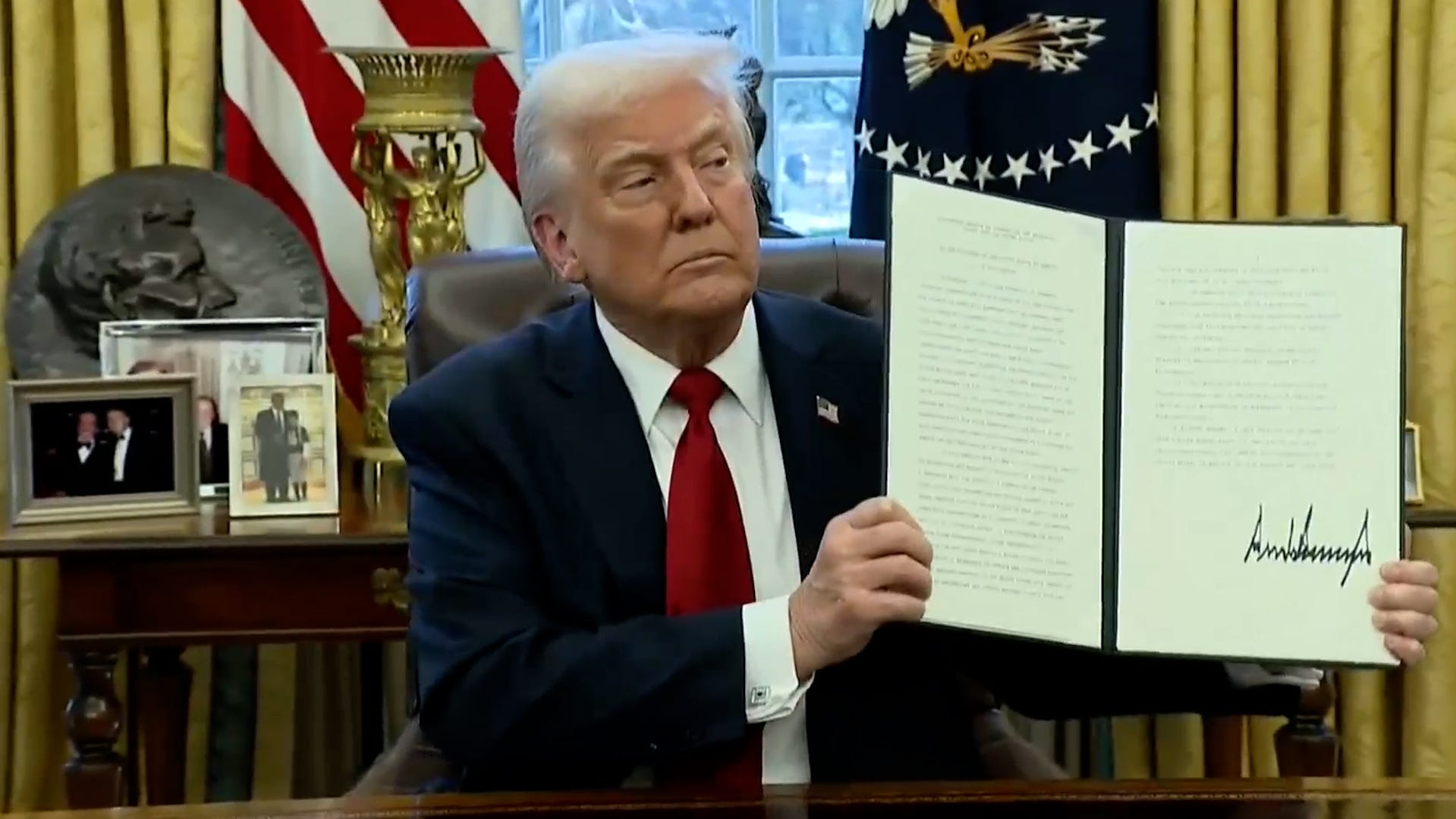
President Trump announces 25% tariffs on automobile imports
President Trump said the tariffs on automobiles will start at a 2.5% and go up to 25%, and will go into effect April 2nd.
WASHINGTON − President Donald Trump on Wednesday imposed 25% tariffs on imported automobiles, barreling forward with a whiplash economic strategy that has rattled markets and ignited a global trade war.
Trump detailed the tariffs, which will start at 2.5% and rise to 25% on all foreign cars and light trucks, in front of reporters in the Oval Office.
“This is the beginning of Liberation Day in America,” Trump said before signing an executive order directing the tariffs, which will go in effect April 2. “We’re going to charge countries for doing business in our country and taking jobs, taking our wealth, taking so much out of our country.”
The tariffs will also apply to some imported auto parts, including engines and transmissions, according to the White House.
Automobiles that fall under the umbrella of imports protected in the Canada-United States-Mexico Agreement — a trade deal orchestrated by Trump in his first term — won’t be subject to the full tariff rate. Instead, the U.S will only levy tariffs on the foreign parts that make up vehicles imported from Canada and Mexico.
The new auto tariffs ‒ which Trump characterized as “very modest” ‒ will go on top of existing tariffs on the imports.
The move comes ahead of his long-promised reciprocal tariffs, which are also set to go into effect April 2, whereby the United States will respond to any nation’s tariffs on U.S. exports with tariffs of the same rate on imports from that country.
U.S. stocks tumbled in after-hours trading after the auto announcement. Futures contracts tied to the broad S&P 500 index were down more than 1%, while those linked to the tech-heavy Nasdaq were off nearly 2% in the late afternoon.
Automaker stocks were also lower: General Motors Company shares lost nearly 5% and shares of Ford Motor Company, the only major U.S. carmaker to end the trading day higher, were more than 2% lower.
The United States imported $474 billion worth of automotive products in 2024, including passenger cars worth $220 billion. Mexico, Japan, South Korea, Canada and Germany, all close U.S. allies, were the biggest suppliers.
Stocks have been on a roller coaster ride as Trump has announced, then walked back, various rounds of tariffs over the past several weeks. Consumer sentiment has also been battered, and inflation expectations have spiked, concerning some Federal Reserve members. Tariffs, which are taxes on imports, are typically passed down from companies to consumers, economists warn.
Trump has argued leveling tariffs on a broad set of industries will boost the nation’s declining manufacturing sectors.
Earlier this week, Trump announced plans to impose a 25% tariff on imports from any country that purchases oil or gasoline from Venezuela, targeting the South American nation for what he called “purposefully and deceitfully” sending criminals into the United States.
Previewing the auto tariffs, Trump said manufacturers of cars and other products “are pouring back into the country” because of previously announced tariffs. Hyundai announced Monday a $5.8 billion investment in a Louisiana steel mill, as part of $20 billion in investment planned over the next four years.
“This is going to lead to the construction of a lot of plants, in this case, automobile plants,” Trump said “And you’re going to see numbers like you haven’t seen, in terms of employment.” He acknowledged, however, “It takes a little while.”
White House staff secretary Will Scharf, as he presented the order for Trump to sign, said the auto tariffs will result in more than $100 billion of annual revenue for the U.S.
“It’s going to make our country very rich, because we’re the piggy bank that everybody steals,” Trump said.
Trump noted that House Speaker Mike Johnson, R-La., attended the tariff executive order in the Oval Office. The president added that congressional Republicans are developing legislation to give a tax deduction for interest on car loans for cars made in America.
“Mike, I hope you can get that because it’s going to be amazing,” Trump said.
Industry experts and former U.S. officials expect the administration to rely on an investigation Trump used during his first term as justification for the new levies.
In a Wednesday morning sales forecast call, Cox Automotive chief economist Jonathan Smoke said massive increases in tariffs would be “highly disruptive” to North American vehicle production, potentially leading to tighter supply, higher prices and a “much weaker economy.”
Without carve-outs for automobiles and parts, Smoke said the auto market could be facing the highest effective tariff rate since World War II. Costs to make a vehicle assembled in Canada or Mexico could go up $6,000 or more, he said, while higher costs for parts could increase production costs for U.S.-made vehicles by roughly $3,000.
Smoke said new and used prices would likely increase. Tariffs could also mean fewer affordable options for drivers. With roughly half of the affordable vehicles sold in the U.S. dependent on Mexico or Canada, Smoke said rising costs could eliminate some of those nameplates.
“Storm clouds are forming on the horizon,” Smoke said, adding that disruptions could start as soon as mid-April.
Contributing: Andrea Riquier and Reuters











